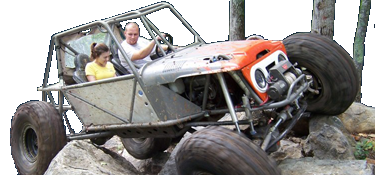In a Jeep with front/rear sway bars, if you disconnect the front bar, the body of the Jeep just follows the rear axle. Right rear droops, Jeep sways to the right. Right rear goes up on a rock, Jeep sways to the left. If you don't have lockers, disconnecting the sway bar may mean the difference between having enough traction or ending up teeter-totter with opposite wheels unloaded. But once you have lockers, removing the front sway bar introduces all sorts of weird behavior, especially at the margins. Now, when the left rear climbs first (leaving the right rear in a hole), the tub rolls right and rearward, unweighting the left front and making the Jeep feel tippy. With the front sway bar, the forces acting on the rear axle are counteracted by the front sway bar, and the whole thing feels more stable.
My gut says that not having sway bars at all is better, but not as good as having both connected. I haven't ever tried it that way, though. I think the sway bars help counteract some of the bad behavior you get in the rear axle when one tire droops way out and then tries to drive itself under the chassis. Basically, they don't let it go so far, so the anti-squat doesn't get out of hand.



